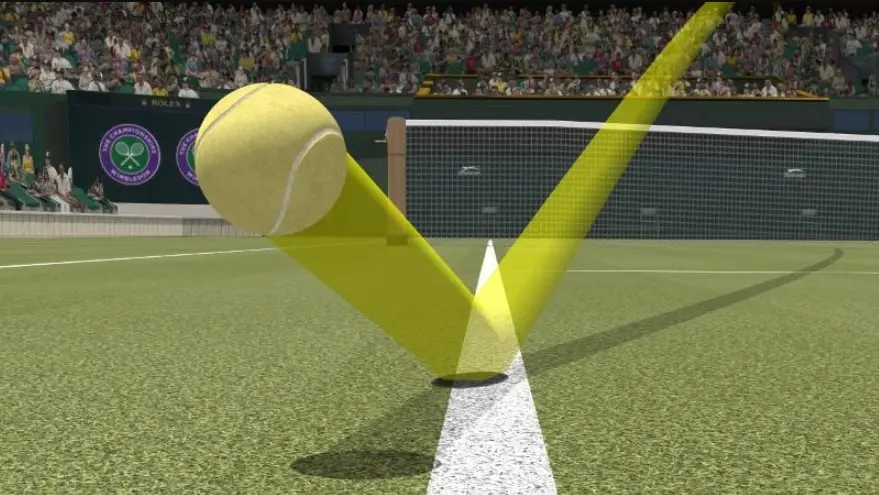For decades, football, or soccer as it’s known in the United States, thrived on a beautiful blend of skill, strategy, and a little bit of luck. Close calls, controversial decisions, and the subsequent furious debates were all part of the game’s rich tapestry. Referees, armed with their experience, intuition, and the sometimes-unreliable view from the pitch, were the ultimate arbiters of truth. But as the stakes and pre-match odds rose with Ivibet Online, fueled by increasing commercialization and global viewership, the tolerance for blatant officiating errors diminished. The roar of the crowd wasn’t just a celebration; it was increasingly a demand for accuracy. Enter Hawk-Eye, a seemingly futuristic technology that promised to bring a new level of precision to the beautiful game, forever changing how it’s played and perceived.
What Is Hawk-Eye? More Than Just A Fancy Replay
Hawk-Eye is a ball-tracking system that uses a network of high-speed, high-resolution cameras strategically positioned around the stadium to visually monitor the ball’s trajectory in three dimensions. These cameras, typically ranging from six to eight per goal, capture hundreds of frames per second, meticulously tracking the ball’s every movement. The data collected is then fed into sophisticated computer software that processes the information and creates a virtual representation of the playing field. While most commonly associated with goal-line technology, Hawk-Eye’s capabilities extend beyond simply determining whether a ball has crossed the goal line. It can also be used to:
-
Track ball possession
Providing data on which team has the ball and for how long, contributing to tactical analysis and understanding game flow.
-
Assist with offside decisions
While not directly used for offside calls in all leagues (VAR handles this in many cases), Hawk-Eye data can provide valuable information and context for the Video Assistant Referee (VAR) to make informed judgments.
The system’s accuracy is paramount. Hawk-Eye boasts an impressive margin of error, typically within a few millimeters. When a goal-line decision is required, the system instantly sends a signal to the referee’s watch, indicating “GOAL” or “NO GOAL” within one second. This immediate and unambiguous feedback eliminates any uncertainty and allows the referee to make a confident and accurate decision.
The Genesis Of A Revolution: Early Applications And Development
The concept of using technology to assist referees in sports officiating wasn’t entirely new when Hawk-Eye emerged. Various systems had been proposed and tested over the years, but none achieved the widespread acceptance and reliability that Hawk-Eye ultimately delivered. The brainchild of British engineer Dr. Paul Hawkins, Hawk-Eye was initially developed for cricket, where it was first implemented in 2001. In cricket, Hawk-Eye revolutionized the Decision Review System (DRS), allowing players to challenge umpires’ calls based on the predicted trajectory of the ball. Its success in cricket paved the way for its adaptation to other sports, including tennis, where it became a staple for line calls and challenging close decisions.
The Road To Adoption: Trials, Tribulations, And Triumphs
Following the Lampard incident and mounting public pressure, IFAB finally relented and authorized trials of various goal-line technology systems. Hawk-Eye was among those rigorously tested in various leagues and competitions. Hawk-Eye consistently demonstrated its superiority, proving its ability to provide accurate and immediate goal-line decisions without disrupting the flow of play. In 2012, IFAB officially approved the use of goal-line technology in football, paving the way for its implementation in major competitions. The first high-profile adoption of Hawk-Eye came in the 2012 FIFA Club World Cup in Japan.
Hawk-Eye In Action: Key Moments And Its Impact On The Game
Since its introduction, Hawk-Eye has played a crucial role in resolving numerous goal-line controversies and ensuring fair outcomes in countless matches. Some notable examples include:
-
Numerous close calls in the Premier League
Hawk-Eye has been instrumental in correctly awarding and disallowing goals in tight games, preventing potential injustices and influencing the outcome of crucial matches.
-
The 2014 World Cup
Hawk-Eye was used for the first time in a World Cup, accurately confirming Karim Benzema’s goal for France against Honduras, silencing any doubts about the technology’s effectiveness on the biggest stage.
Conclusion: A Technological Triumph
From its humble beginnings in cricket to its current status as a standard in professional football, Hawk-Eye has revolutionized the way the game is played and perceived. As technology continues to evolve, Hawk-Eye is likely to play an even greater role in shaping the future of football, providing valuable insights and ensuring fair play for generations to come. The initial skepticism has largely faded, replaced by an acceptance and even an expectation that this technological marvel will continue to be a crucial part of the beautiful game.
Also Read- The Benefits That Block-Chain Technology Provides For All Australian Businesses.



